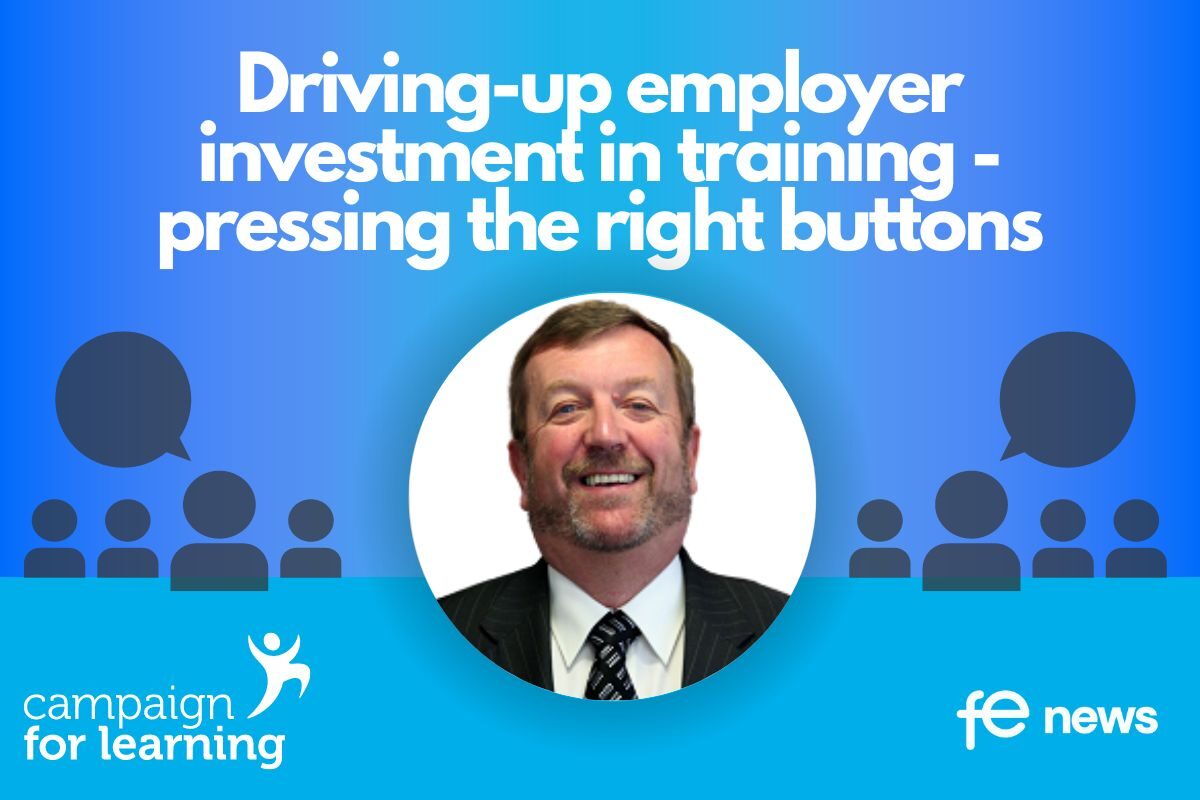Increasing employer demand for work placements for level 3-5 vocational courses in England

Work placement has been an essential element in vocational courses for many years. The presence of work placement should hardly be surprising given the importance of applying what has been learned in the classroom in real-life situations.
Although many education and training providers have excellent realistic work environments – such as training restaurants, hair salons and construction facilities – nothing can really simulate the rewards and pressures of the workplace.
Full-time 16-19 Level 3 T Levels: A central role for work placement
Many vocational courses up to Level 3 contain work placement opportunities, but these are usually short – two weeks being common – and seldom fully integrated into the learning programme.
Indeed, such is the value attached to work placement, that it has been given a central role in the new T Levels at Level 3, offering a high-quality technical alternative to GCE A Levels. In addition to what is learned off the job, students must complete a minimum of 315 and a maximum of 420 hours of work placement as an essential part of their qualification. Although some variations have been permitted for a proportion of home working in certain industries, effective work placements lie at the heart of high-quality vocational and technical qualifications.
In undertaking a placement, students are intended to gain a practical insight into their chosen sector and embed the knowledge and skills learned in the educational setting off the job. From an employer perspective, hosting a work placement gives the opportunity to assess the suitability of a student for employment. Perhaps a neglected area in considering the added value of placements is recognising the role it can play developing the personal skills valued by employers.
Where a T Level placement works well for both employer and student, an offer of permanent employment will often ensue. This can raise issues for providers if this happens mid-course, as the student will be recorded as unsuccessful despite progressing to a job in their chosen field. Even if they continue on a related apprenticeship, T Levels are designed for full-time study with no option to complete part-time.
Full-time Level 4-5 HTQs: part-time work and a work placement?
Beyond Level 3, the picture is less clear. Full-time students on some Level 6 degree programmes enjoy extensive periods of work placement. For example, students aspiring to become social workers or to qualify in professions linked to medical disciplines such as nursing or podiatry must undertake work placements, not only as an essential part of their qualification, but to also face assessment in the workplace before they can become qualified to practice.
Despite the value attached to Higher Technical Qualifications (HTQs) by employers, few foundation degrees or higher national qualifications require a compulsory and protracted work placement. However, FE colleges offering these qualifications report high levels of part-time employment as students seek to offset the costs of study by working, largely in service sector occupations. In almost all cases, those jobs are unrelated to the subject being studied.
Nevertheless, in addition to generating essential income, students also develop many of the skills valued by employers such as teamwork, interpersonal skills and above all, resilience – balancing study with work and in many cases, family and caring responsibilities.
Alongside the introduction of more T Levels, there is a renewed focus on Higher Technical Qualifications. The demand for work placements will increase enormously, at a time when employers are under great pressure to recruit and retain the people they need to run their businesses. Providing work placements may be seen as yet another demand on time and resources in short supply. Education providers and employers will have to find new and creative ways to ensure that these demands can be met and that employers see providing work placements as an opportunity, not a burden.
Creative partnerships between providers and employers
There are several examples from current practice of how this might be done. In some cases, work placement students have been sent to take the place of apprentices as they complete the off-the-job element of their programme. In others, placements have been timed to coincide with times of high demand, for example in the hospitality industry. Conversely, other placements have been timed to reflect the seasonality of some businesses, with students being sent into the workplace during quieter periods, when employers have the time to give them the attention and support they need.
Recommendation 1
Validating bodies and the Institute for Apprenticeships and Technical Education (IfATE) should consider means of bringing the T Level and apprenticeship routes closer together, facilitating transfer between routes as individual careers develop.
Recommendation 2
Providers of Higher Technical Qualifications (HTQs) should recognise the value of part-time employment in developing many of the skills valued by employers, preferably seeking to incorporate those experiences in course assessment and student evaluation. Where possible, part-time employers should be involved directly.
Recommendation 3
Employers and providers should work closely together to embed work placement in programmes of study, reflecting the needs of both providers and employers. Placements should be timed to reflect the patterns of business and industry rather than traditional academic years.
By John Widdowson, Board Member, NCG
This article is part of Campaign for Learning’s series: ‘Driving-up employer investment in training – pressing the right buttons’.
Part One: Employer investment in context
- Louise Murphy, Economist, Resolution Foundation: Investment in the round
- Dr Vicki Belt, Deputy Director, Enterprise Research Centre, Warwick Business School: UK enterprises and investment in capital and training
- Becci Newton, Director, Public Policy Research, Institute of Employment Studies: Employer investment in training in England
Part Two: Drivers of employer investment in training
- Neil Carberry, Chief Executive, Recruitment and Employment Confederation: Derived demand, British management and employer investment in training
- Ewart Keep, Professor Emeritus, Education Department, University of Oxford: Strategies to drive-up employer investment in training
- Sam Alvis, Head of Economy, Green Alliance: Transitioning to net zero, green skills and employer investment in training
- Dan Lucy, Director of HR, Institute of Employment Studies: Job quality, job design and driving-up employer investment in training
- Natasha Waller, Policy Manager, LEP Network: Local inward investment, business support and employer demand for training
- Jovan Luzajic, Acting Assistant Director of Policy, Universities UK: Universities, R&D, business innovation and meeting employer skills needs
- David Hughes, Chief Executive, Association of Colleges: FE colleges, business innovation and meeting employer skills needs
Part Three: Increasing employer investment in training
- Paul Bivand, Labour Market Consultant: Why should employers invest in training in a flexible labour market?
- Aidan Relf, Skills Consultant: Why should employers invest in training with large net worker migration into the UK?
- Stephen Evans, Chief Executive, Learning and Work Institute: Raising employer investment in training
- Robert West, Head of Education and Skills, CBI: Increasing employer investment in training
- Lizzie Crowley, Skills Policy Adviser, CIPD: Encouraging employer demand for training
- Anthony Painter, Director and Daisy Hooper, Head of Policy and Innovation Chartered Management Institute: Increasing employer demand for management training
Part Four: Raising employer demand for publicly funded post-16 education and skills
- Jane Hickie, Chief Executive, AELP: Increasing employer demand for post-16 apprenticeships in England
- Mandy Crawford-Lee, Chief Executive, UVAC: Increasing employer demand for level 4-5 technical education in England
- Ian Pryce, Principal, The Bedford College Group: Increasing employer demand for higher technical education in England
Part Five: Raising employer demand for work placements
- John Widdowson, Board Member, NCG: Increasing employer demand for work placements for level 3-5 vocational courses in England
- Stephen Isherwood, Joint Chief Executive, Institute of Student Employers: Increasing employer demand for undergraduate work placements in England












Responses